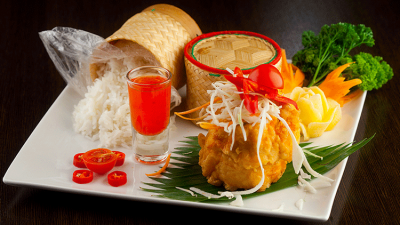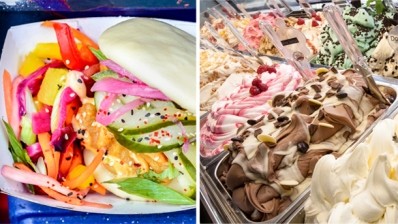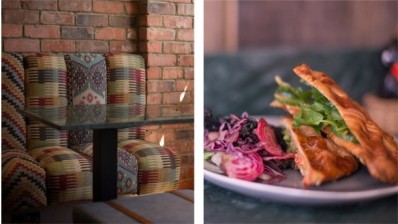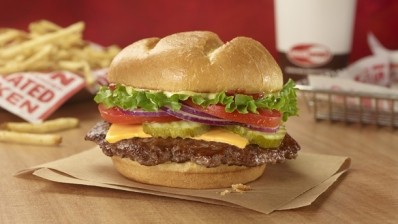Shape shifters: What are the next big brands and trends for the restaurant sector?
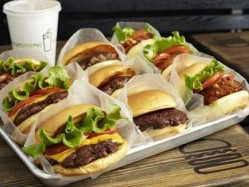
What does the next 18 months hold for the mid-market and fast-casual sectors? Given the pace of change in these dynamic markets, it is growing increasingly difficult to predict the future. After all, who could have foreseen that 2013 would be the year that not one but four US fast(ish) burger joints would enter the UK to breathe new life into a tired category so long dominated by McDonald’s and Burger King?
The signs for the future are encouraging, however, according to foodservice consultancy Horizons. It predicts the value of the UK’s eating-out market will exceed pre-recession levels in four years’ time, reaching £48bn by 2017, and reports that food and beverage sales in restaurants grew 6.8 per cent last year.
Against this positive backdrop, restaurant chains will step up expansion plans that may have been on hold in more uncertain times. Brands mainly based in London and the south-east will look further afield, something that has already started in earnest this year. Byron has just cut the tape on its Liverpool site and operators such as Bill’s, Prezzo, Frankie & Benny’s and Côte are looking to boost their presence in the regions to take advantage of lower rents. The opening of the second phase of the Trinity Leeds shopping centre will expedite this when southern operators such as Pho, Tortilla and Chicago Rib Shack open there in October.
The growth of certain sectors could also pave the way for consolidation over the coming years, in particular in the burgeoning burrito arena. All the major players have secured some sort of backer now, so it’s likely to be only a matter of time before one makes a play for another. As Barburrito’s Morgan Davies says: “Our investors will be looking to grow Barburrito exponentially, and some of that will happen through acquisition.”
The success of the burrito market also means investors will be looking for the next up-and-coming sector in which to sink some funds, and South-East Asian concepts might be just what they are looking for. Vietnamese restaurant group Pho secured backing from ISIS Equity Partners but there are plenty of other growing brands ripe for investment, not least Giggling Squid which has caught the attention of potential suitors, as well as Tampopo, Indo-Chinese chain Banana Tree and sushi player Tsuru.
The ‘franchise’ model Carphone Warehouse boss Charles Dunstone has set up with burger restaurant Five Guys – they reportedly have a 50/50 partnership, splitting investment and profits down the middle – is also worth keeping an eye on.
Has such a deal opened the door for more entrepreneurs to bring their favourite US brands across the pond? Brands such as The Cheesecake Factory, Jimmy John’s, Arby’s and Chili’s have the potential to make a mark over here, and might do so if a meaningful partnership could be created.
Restaurant hasn’t got a crystal ball, but we’ve pinpointed a number of areas, brands and deals – either done or in the offing – that we think will shape the restaurant landscape over the next year or so. From fledgling concepts to the evolution of established categories, our ‘ones to watch’ are outlined here.
The next big things in food:
Refined fast-food
So far the flurry of activity in the burger market has been restricted to the more premium operators such as Byron and GBK, but the emergence of US burger imports Shake Shack and Five Guys will change that. With prices in step with those of fast-food joints but with an approach more akin to the premium players, the two new entrants have the potential to reshape the UK burger landscape. They’ve also seemingly opened the door for others to follow, with US chains Smashburger and Fatburger on their way here soon and South African quick-service burger chain Steers also launching in the UK in Clapham Junction, south west London, this month. The US has dominated the UK fast-food market – whereas British players have targeted the more upmarket end of the sector – and looks set to have the lion’s share of this new refined-yet-fast category as well.
American barbecue
The new-found barbecue craze sweeping the capital, for which players such as PittCue have been largely responsible, shows no sign of abating. Jamie Oliver, not content with having high-end barbecue restaurant Barbecoa in the City of London’s One New Change development, has now launched the more rough ’n’ ready Jamie Oliver’s Diner in Theatreland as further proof that the sector still has legs. More specifically, the pendulum seems to be swinging in favour of barbecue restaurants inspired by the Deep South. This month Maxwell’s Restaurant Group turns its Navajo Joe restaurant in Covent Garden into Joe’s Southern Kitchen & Bar and in June The Lockhart opened in Marylebone, central London. The restaurant, which is run by two Texan couples, features a ‘south-west’ menu that features traditional dishes such as crab hush puppies, fried okra and Louisiana crayfish étouffée.
Late-night pizza places
What with a Pizza Express, Prezzo or Ask Italian on every high street in every town you’d think there couldn’t possibly be a fresh appetite for pizza. But you’d be wrong. The market for a more traditional and authentic products is in rude health, led by practitioners such as Rossopomodoro and Franco Manca, and the category continues to attract new players. One area in particular that is growing is places operating outside the family-dining arena and attracting a cooler, late-night crowd. Pizza East, operated by Soho House Group, has three London sites and is likely to expand further, and Homeslice, which started life as a pop-up at The Filling Station in King’s Cross, central London, opened a 50-seater restaurant in Neal’s Yard, also in central London, in March. Pizza Pilgrims, meanwhile, which operates a stall at Berwick Street Market in Soho, opens its first bricks ’n’ mortar operation shortly in the same area.
Drinks-led formats
It’s hard to ignore the rise of formats in which the drinks are as important – if not more so – than the food, and it’s a category that will continue to thrive thanks to increased awareness of craft beers, natural wines and British artisan spirits. Scottish brewer BrewDog, which specialises in interesting beers, leads the pack with 11 sites, and rival Craft Beer Co plans to expand from its four sites later this year. On the wine side, Vinoteca – with three London sites – and 28°-50° Wine Workshop & Kitchen – with two – are the key players to watch, but other formats are expected to start to muscle in on their patches.
Big-boy brand extensions
Gaucho showed how it could be a done a few years back with CAU and now everyone's getting in on the brand extension bandwagon. Earlier this year La Tasca launched Bellota Bar Y Tapas in Brighton, the first of what is a new format of tapas bars with no universal branding, and Jamie Oliver is launching Jamie’s Italian Trattoria in Richmond, south-west London, this summer, a less formal take on the chef’s Jamie’s Italian brand. Meanwhile, Sargeant Partnership, which operates the 16-strong Handmade Burger Co, is to open a second site under its fledgling Mexican street-food brand, Chilacas, in Leicester. Prezzo has also got in on the act, with the group trialling a new casual-dining venture called Cleaver at its Cobham, Surrey, site. Prezzo is currently converting the former Brasserie Gérard site in the town to the new meat-led format, where food will be cooked in open kitchens.
Edgy Eastern food
It started with the rise of ramen bars across the capital, with brands such as Koya, Bone Daddies and Tonkotsu serving classic and hearty Japanese dishes in unassuming surroundings, and the movement is now starting to pick up pace with more experimental formats. Leading the pack are Bone Daddies owner Ross Shonhan, who launches Flesh & Buns in Covent Garden this month, and MasterChef 2011 winner Tim Anderson, who opens southern Japanese food restaurant Nanban later this year. Flesh & Buns takes its cues from the informal Japanese izakayas and claims to be the first restaurant in London to specialise in hirata buns – filled steamed buns – while Nanban promises to offer something different again. Asian street-food vendors are also making the switch indoors, with steamed-bun brand Yum Bun recently taking up residence in Islington, north London.
Formats to keep an eye on:
Barburrito
The UK’s original burrito joint, Barburrito opened in Manchester’s Piccadilly Gardens in 2005 and has already built up a strong presence in the north, in places such as Leeds, Liverpool and Nottingham. Last April the company secured investment to the tune of £3.25m from the Business Growth Fund and has now entered its second phase of development with its sights set on London. It opened its first site in the capital – at Paddington station in March – and intends to open a further two or three this year, with at least one in London. Barburrito’s competitive pricing, its proven track record outside London, and its ambitious growth plans – it wants 18 sites by 2016 – puts it in pole position in the burgeoning burrito category.
Vapiano
The Italian casual-dining group has been around in the UK since 2008 but expansion has thus far been glacial, with only its third site due to open in December. Buoyed by positive trading results – it turned a loss of £298,0000 to an operating profit of £372,000 in 2012 – growth is set to quicken, with the chain aiming for up to a dozen sites in the capital and in excess of 50 in the UK. Vapiano was an early adopter of innovative payment technology, whereby customers use chip cards to order their food or drinks from the bar or from the individual pizza, pasta and salad stations, which is now being embraced by some of the bigger chains. This, along with its fast-casual credentials, means the company is in a strong position to capitalise on the prevailing trends in the eating-out sector.
Ape & Bird
It might only be a single site, but Polpo owner and perennial trendsetter Russell Norman’s stab at becoming a publican by taking over the old Marquis of Granby pub in London’s Seven Dials will be worth taking note of. Called Ape & Bird, Norman’s ambition is to create a gastropub in a high tourist area, which is no mean feat. We expect a well-considered menu of pub classics ‘Norman style’, a classy, yet stripped-back fit-out and a decent selection of interesting libations to be part of the offer. It’s a delicious prospect – even if the name does sound like something you’d watch on CBeebies.
Giggling Squid
The growing Thai chain opens its sixth site in Reigate, Surrey, this month, adding to locations in Brighton and Hove, in East Sussex, Crawley, West Sussex, Tunbridge Wells, Kent, and Henley, Oxfordshire. Launched in 2009, the restaurant operates a tapas-style menu for lunch where diners can choose different ‘tasting sets’ that allow them to sample several dishes in a single sitting, while for dinner its menu is more extensive. The potential for a truly national Thai food brand is evident, with brands such as Busaba Eathai (with 10 sites mainly in London), Thai Square (17 sites in the south) and Koh Thai Tapas (Bath, Boscombe and Bournemouth, both in Dorset, and Southsea, Hampshire) in the ascendancy, but Giggling Squid could well beat them to it with plans for an 80-strong estate within the next seven years.
Five Guys
Having taken over the huge site on London’s Long Acre, US burger chain Five Guys has set its marker down for what eventually could be steady and sustained expansion across the country. The chain, which has the backing of Carphone Warehouse founder Charles Dunstone in the UK, plans to open at least four more restaurants in the capital this year and already has sites outside London in the pipeline – the Oracle centre in Reading, Berkshire, is next on the cards.
Giraffe
Tesco’s purchase of Giraffe in March marks the first major play by a supermarket in the restaurant sector and, with the retail giant behind it, all eyes will be on how the restaurant chain evolves. The first under its new ownership opens at its Tesco Extra store in Watford, Hertfordshire – the 50th Giraffe in total – and will give an early indication of how the two brands will work together. The supermarket chain hasn’t reported the strongest of performances of late, what with it pulling out of the US and a drop in profits, but the huge amount of customer data it has acquired through its Clubcard will be a powerful weapon in targeting and bringing in customers to Giraffe.
Grillshack
When Richard Caring backs a new venture it’s worthy of note. Grillshack, opening in Soho in August, will operate a quick all-day counter-order grill offering, both eat-in and takeaway. As well as having the backing of the Côte, Bill’s and Caprice Holdings owner it will be led by Mark Askew, former executive head chef at Gordon Ramsay Holdings, and Hannah Bass, former UK ops director at Hakkasan.
The recent deals (and non-deals):
Luke Johnson's pub interests
The serial investor has his fingers in many pies on an individual level and through his fund Risk Capital Partners, but it’s his personal investments that are perhaps the most juicy at the moment. Having taken a 50 per cent stake in Grand Union there are plans for the pub group to target Bristol, Bath, Manchester and Brighton once it has reached its target of 20 to 25 sites in the capital – it currently operates eight. Pub chain Draft House, of which Johnson is also an investor and which has just opened its sixth site, also has bold expansion plans. Owner Charlie McVeigh wants his portfolio to swell to 10 by the end of 2014.
Byron
The burger chain was taken off the market last month after potential buyers failed to reach its £100m asking price and future expansion remains in the hands of owner Gondola Holdings. It has been mooted that a key reason the bidders, which included RIT Capital Partners, TDR Capital and Searchlight Capital Partners, wouldn’t meet the price was because of the lack of a proven track record for the chain outside London – Gondola had been looking to fetch a similar price to Côte but, with 14 fewer sites than the French bistro chain, that was always a big ask. Byron operates sites in Oxford, Cambridge, Manchester and, most recently, Liverpool, and it is expected to step up its movement across the UK to overcome this issue should it next hang up the for-sale sign, which could be as early as next year.
Côte
The deal for Richard Caring’s Côte is still on the table and, while it is believed there has been some haggling down on the price, expectations are that the sale will still break the £100m mark. Côte acquired its 44th site, in Sevenoaks, Kent, last month and plans to open in York; Tunbridge Wells, Kent; St Katharine Docks in east London; and Windsor, Berkshire. It will be interesting to see if its new owners will keep expansion at this speedy pace.
Drake & Morgan
The highly-regarded bar-restaurant operator was recently acquired by Bowmark Capital and has just opened its sixth site, The Happenstance, in the newly developed No. 1 St. Paul’s Churchyard in the City of London. Expansion will now quicken, with Bowmark believing there is the potential to grow to up to 15 sites in the capital and open 70 outlets across the UK in total.
This article first appeared in the July issue of Restaurant magazine.
